Are you planning a successful business? The solution to the problem is to transfer residential premises to non-residential premises. The procedure will allow you to repurpose an object: office, store, workshop, mini workshop. The legislator allows the owner to change not only the legal status of the property, but also the procedure for its use. The value of the object increases, any type of activity can be organized.
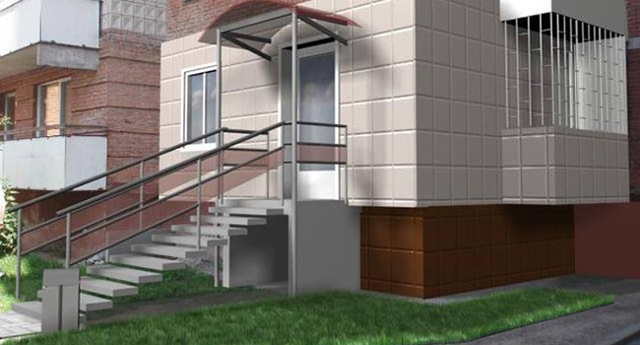
Conditions for the procedure
According to the Housing Code of the Russian Federation, the transfer of an apartment to a non-residential property is permissible subject to the following standards:
- The room has a separate entrance from the street. Object 100 sq. m - organize emergency doors.
- It is prohibited to change the status of a separate room, allocated share, or part of a common apartment.
- At the time of the procedure, the property will be cleared of people's habitation and everyone will be deregistered.
- The object should not be the subject of a pledge or be burdened with various sanctions (arrest, restrictions on disposal). If third parties claim ownership, they are reimbursed at the expense of the apartment (loans) - it is impossible to transfer residential premises to non-residential premises.
- Real estate cannot be located in buildings that are officially recognized as unsafe and planned for demolition.
- Illegal redevelopment – synchronize the technical data in the object’s passport with the real state.
When constructing a residential building, the premises of the building on the first floors are allocated for commercial real estate, and therefore do not require transfer to another category.
When transferring an apartment on the second or higher floors, make sure that the lower objects have non-residential status. If the project is approved, think in advance about how to organize a separate entrance.
The procedure for transferring residential premises to non-residential property may be prohibited if the property is located in a building that has the status of an object of historical or cultural heritage. Apartments that are not connected to the main utilities are not suitable for professional and commercial activities.
The technical condition is unsatisfactory, major repairs are required, reconstruction is required - transfer is impossible.
If the building is registered with the headquarters of civil defense or emergency situations, the procedure will be complicated. You will have to pay a significant amount for an expert assessment.

To seek the consent of neighbors?
The procedure for transferring residential premises to commercial non-residential stipulates that the change in status must be approved by neighbors.
Inform in advance what you will be doing. Refusals are due to the fact that a person plans to organize an activity that is harmful to health or causes discomfort - a bar, a hairdresser.
Do not obtain the consent of the registered or living citizens of neighboring apartments, namely the owners. They have been missing for a long time - try to contact them. In order to hold a general meeting of residents, it is necessary to gain support.
How to proceed:
- When transferring premises from residential to non-residential, contact the HOA or management company. Write a statement with a request to consider the issue at the next meeting of residents. Another option is to initiate an extraordinary event. Citizens will have to be notified in writing about the event 10 days in advance, indicating the reason and date. Almost a difficult task. The optimal solution is to personally communicate with people and deliver a letter.
- The meeting is considered legal when more than half of the owners took part. There must be at least 2/3 votes in favor of the translation.
- A protocol containing the results of the meeting is drawn up.
Important! Transferring an apartment to non-residential premises is permissible without obtaining permission from neighbors.
This is possible if the change in real estate status does not affect the common property of all apartment owners:
- elevator;
- ladder;
- technical floor;
- roof;
- basement;
- landing;
- bearing structures;
- premises for common use or services for residents.
It is difficult to prove that a person does not violate the interests of others. It's better to get consent in advance.
If there is no HOA, how can the home be transferred to non-residential premises without organizing a general meeting? Visit each person personally and ask them to leave a signature (protocol). Convene a meeting on your own and enlist the support of most of your neighbors.
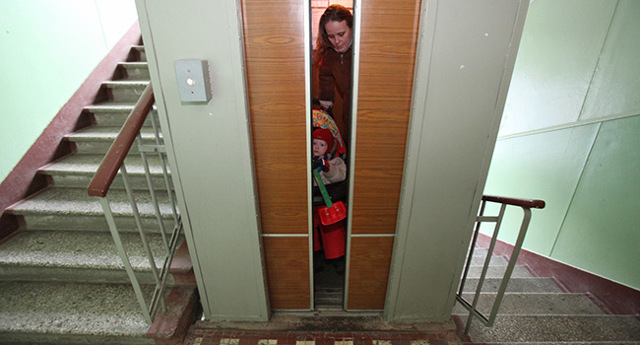
Why do they refuse to change status?
The reason is that the citizen did not submit a complete package of documents to the municipal authority. A list of missing papers is compiled and a notification is sent to the applicant within 3 days. The applicant is obliged to submit them for consideration no later than 15 days. The requirement is ignored - a decision is made to refuse to change the status of the object.
Another reason is that a person submitted documents to an inappropriate government structure that does not deal with translation.
The main obstacle is the technical issues identified during the audit of the facility:
- The plan for redevelopment and reconstruction of the premises does not coincide with the real picture.
- The apartment does not meet the requirements of the legislator - safety of operation, fire protection, availability of ventilation, operability of communications.
- Restrictions established by the Housing Code of the Russian Federation - it will be revealed that people live permanently, and the activity is dangerous for others.
Having received a refusal, it is necessary to eliminate the discrepancies and submit the package of documents again. The situation has repeated itself - you can appeal against the actions of officials in court.
Important! If the result is negative, the applicant will have to begin the entire procedure of transferring real estate from residential to non-residential, bringing the premises into full compliance. This is unprofitable - you lose money and time, obtaining new conclusions and preparing technical documentation.

Algorithm of actions - changing the status of real estate
Read the step-by-step instructions for converting residential premises to non-residential premises:
- Visit the territorial department of the Property Management Department - request a plan of all floors and an explication of the building. The document is issued after 30 days.
- Contacting the BTI - obtaining a technical passport of the object, a graphic plan.
- We obtain permission from the sanitary and fire departments.
- We receive a certificate from DEZ.
- Neighbors' signatures.
- An application addressed to the head of the management company will issue a final report on the technical condition of the apartment building.
- Extract from the house register - information about registered, living citizens.
- We order a redevelopment project (specialized organizations).
- Submitting an application to the Property Department to transfer an apartment from residential to non-residential. The commission will review the appeal within 45 days and make a decision.
- BTI - the structure is obliged to provide calculations determining the cost of changing the status of the premises.
- We receive a protocol from the housing commission on the price.
- We submit papers to Rosreestr - it is permissible through the MFC, in person.
- We pay the state fee.
What documents are needed for the waiting list for kindergarten?
The final stage is obtaining a registration certificate of ownership of the object.
Does the premises have multiple owners? It is advisable to issue a power of attorney for one person, who will represent the interests of everyone.
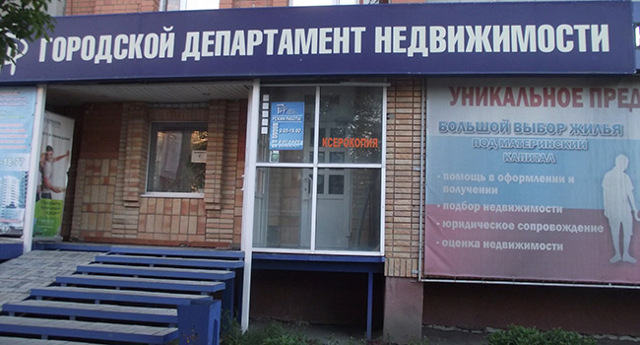
Residential apartment - how to transfer to non-residential premises
Following the instructions, the procedure is easy.
There are pitfalls:
- The bank will not approve a change in the status of housing if it was purchased with a mortgage, is collateral for obligations, or is put up for auction for non-payment of debts.
- The consent of neighbors is a barrier. It is difficult to achieve a majority of votes, but you can guarantee residents in advance: the absence of noise, unpleasant odors, and garbage.
Redevelopment – don’t skimp on repair work! Engage professional teams with construction permits. This also applies to the transfer of an individual private house to non-residential premises. The interdepartmental commission will point out shortcomings - there will be someone to file complaints against and correct errors free of charge.
When building an exit to the street, pay close attention to the arrangement of the surrounding area. It is unacceptable to cut down trees, “protrude” onto the roadway, or block public transport stops without permission.
Analyze where a ramp for the disabled can be located - a prerequisite. The angle of inclination, length, presence of railings will be checked during the project revision and commissioning.
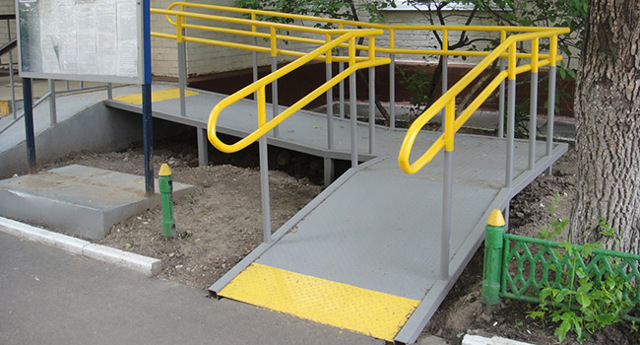
How a residential building is converted into non-residential premises
The procedure is not much different from changing the status of an apartment. There are features. It is permitted to use part of the building for commercial purposes. The problem is that the local administration sometimes equates a house to an apartment and refuses the owners.
The peculiarity is the presence of a land plot and its direct purpose. If this is an individual construction, then it will not be possible to organize an office building.
Have you opened a cafe or store? You will have to prove that the land is needed for a parking space, and parking is planned during the process of converting non-residential premises into commercial ones.
The house is multi-storey - you can change the status of the entire object.
Documentation:
- Owner's statement.
- Certificate of ownership.
- Plan.
- Redevelopment project.
Consent to the transfer of the house is required from all registered residents.
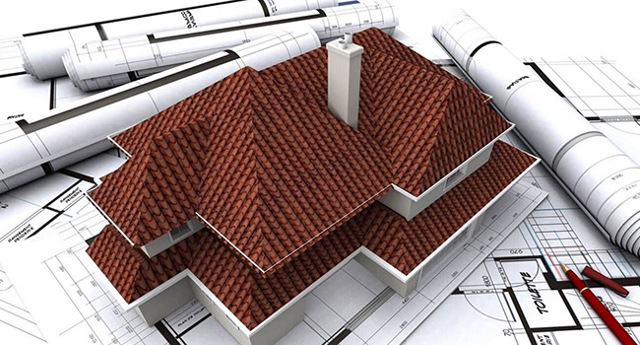
Documents for changing status
Transferring an apartment to non-residential premises, as a procedure, begins with collecting a package of papers. The preparatory stage is important. For the interdepartmental DUI commission you will need:
- Floor plan, explication - contact the Department, it will issue a power of attorney to order BTI documents. Prepare: passport or power of attorney, certificate of ownership. With a completed conclusion, we go to the Bureau and order an explication.
- Technical passport of the object with plan (BTI).
- Fire supervision - conclusion. The Main Directorate of the Ministry of Emergency Situations is writing a statement and inviting an employee to the site.
- The sanitary and epidemiological supervision will issue a conclusion. Receive from the SES after a specialist has visited the site.
- Certificate from DEZ – issued by housing departments, homeowners associations.
- Consent of neighbors.
- A technical conclusion will be issued by the Home Owners Association or a similar office. Information about the technical condition of the entire building.
- Extract from the house register - passport office. The certificate is valid for 2 weeks.
- A project for the redevelopment or reconstruction of a premises.
Important! The department reserves the right to require additional documents - a certificate of absence of encumbrances, credit obligations. Please take this into account when transferring a private house to non-residential premises.
We hand over a package of documents to the DUI and additionally provide: a passport, a certificate of ownership.
Important! If the apartment has been redesigned, it is worth legalizing it.
Documents for BTI:
- Statement from the owners.
- Protocol of the interdepartmental commission.
- Passport.
- Ownership.
- Explication and TP of an object.
- Constituent documents – for legal entities.
The commission will decide on the cost of the procedure and draw up a protocol. The amount is paid in full.
Owners contact the Federal Registration Service or the MFC. Documents for registering ownership of an object with a new status:
- Passport.
- 2 protocols – BTI and interdepartmental commission.
- Statement.
- Receipt for payment of state duty (1000 rubles).
On the day you receive the documents, contact the registrar and pick up a certificate of ownership of the object.
We answered the question of how to make a residential property non-residential and recognized as commercial real estate.
Important! On our website you can download: an application for the transfer of residential premises to non-residential, consent of the owners of apartments in an apartment building, a sample power of attorney for the transfer of residential premises to non-residential, a statement of claim to invalidate the decision to refuse to transfer residential premises to non-residential.
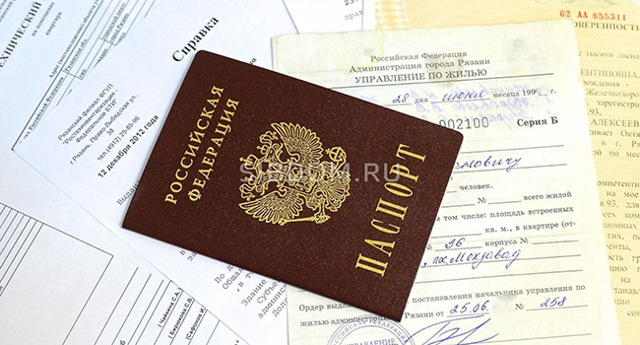
Upcoming expenses
It is impossible to determine in advance how much the procedure will cost – the price is determined individually:
- The difference in the cost of non-residential premises when calculating the BTI.
- Payment of state duty.
- Notary Services.
- The work of the Bureau is the preparation of a technical plan for the facility.
- Cost of the redevelopment project.
- Repair work.
- Landscaping.
Converting residential premises to non-residential premises is a complex and time-consuming task. It is difficult to prepare a package of documents, comply with the requirements of the legislator, “withstand” the commission, and bring the object into compliance. Contact specialists who will quickly help implement the project.
Attention! Our website has an online lawyer who can provide all the necessary support during the procedure for transferring from residential to non-residential premises. Sign up for a free consultation in a special form.
- You will also be interested in learning how to convert non-residential premises into residential ones.
- We are waiting for your questions and will be grateful for your rating of the post.
The procedure for transferring residential premises to non-residential premises has been changed

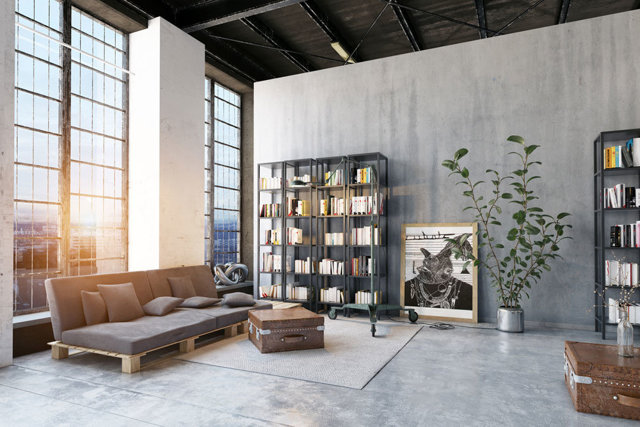
Photo: iStock
The current procedure for changing the status of premises does not take into account the rights of residents of the house. The President of Russia ordered this gap to be corrected.
“We often see the following picture: neighbors suffer because of the transfer of residential premises to non-residential premises,” explained Ilya Osipov, a member of the State Duma Committee on Housing Policy and Housing and Communal Services.
“This happens without their consent, thereby reducing the value of the property that a person owns.”
Besides, it's extra noise. Not only shops, but also all kinds of entertainment establishments are appearing in former residential premises, added Ilya Osipov.

Which apartments are most popular on the real estate market?
The position of the relevant committee is that the possibility of transfer should be preserved, but its procedure should be quite strict. As the deputy assured, the design proposed by the government will take into account the interests of the residents of the house.
According to changes to the Housing Code, it will be possible to remove a premises from the housing stock with the “consent of each owner of all premises adjacent” to the premises that are being converted into non-residential ones. Consent must be confirmed in writing.
In addition, a change in the status of the premises must be approved at a general meeting of owners. If we are talking about an apartment building with several entrances, then two-thirds of the meeting participants must live in the entrance in which the premises being transferred are located. At the same time, the majority of residents of this entrance should support this decision.
It will become easier to obtain wood for housing construction
- Based on the results of the meeting, a protocol is drawn up, and in order to change the status of the premises, this document will need to be submitted to the authorized authorities for decision-making.
- It is also important that the amendments require separate access to the premises after its transfer to non-residential use.
- The possibility of conducting unscheduled inspections when complaints about violations are received from residents is also prescribed.
The initiative is associated with a high-profile law that will come into force on October 1, 2023. It talks about banning the placement of hostels in residential premises of apartment buildings.
However, we remind you that the document does not prohibit hostels operating in premises that have been converted to non-residential use and have a separate entrance.
How to convert a private residential building into non-residential premises?

Most often, people decide to convert residential premises to non-residential premises in a private house if they intend to engage in entrepreneurial activity: open a store, cafe or other institution providing services or products.

Premises requirements
According to the law, only non-residential premises can be used for commercial activities. If the property is considered residential, business in it is impossible.
To convert a premises into non-residential use, it must meet the following requirements:
- No encumbrances. One of the most important conditions. If the property is mortgaged, written permission for the transfer will be required from the mortgagee, but it is unlikely that he will approve this. Most often this happens when you buy a house with a mortgage and want to subsequently convert it into a store.
- The presence of two entrances and exits: one - the main one, the second - from the rear side in case of evacuation. These are the requirements of GOSTs for fire safety standards.
- The home must be owned by the applicant. Citizens registered in it cannot re-register documents or perform other transactions without the permission of the owner.
IMPORTANT !!! Another important criterion is that the house should not be used for its intended purpose - for living.
It must also be completely isolated from the residential part by erecting partitions, and there should be no doors, stairs or passages.
It is worth noting that housing redevelopment must be carried out not only actually, but also documented. It is necessary that it complies with sanitary, technical, fire safety, construction and environmental standards, otherwise no service will give permission.
IMPORTANT !!! It is worth paying attention to the purpose of the site on which the house is built. If it is intended for individual housing construction, it will not be possible to re-register the property as commercial.
Despite the fact that when transferring a private house to non-residential premises, permission from neighbors is not required, unlike a similar situation with an apartment, it should be taken into account that in some cases problems may arise later.
Most often this happens when the owner decides to open a cafe or other entertainment establishment in close proximity to other buildings, and then residents begin to complain to the police, which can bring a lot of trouble to the business owner.
It is optimal if the house has only one owner and is located far from other areas: in this case, you can avoid problems and get benefits, because the store or institution providing services will always be popular with neighbors down the street.
Step-by-step instructions for translation
The detailed procedure for converting residential premises into commercial ones is as follows:
- The owner independently checks whether the building meets all the requirements, then collects documents and submits them to the architecture department of the local administration.
- After evaluating the submitted materials, and, if necessary, the object itself, the architects issue a permit.
This usually takes about 30 calendar days, but if there are comments, the process may take longer. Often reconstruction is required, and then everything has to be redone according to the project. It can be ordered from a specialized company or directly from the architecture company by paying a set amount. In any case, it must be approved by the architects.
- When permission from the administration has been received, permitting documents from the Ministry of Emergency Situations, Rospotrebnadzor and other services will be required before commissioning, depending on the purpose of the building.
- The administration issues an acceptance certificate. With it and other documents, the owner visits Rosreestr to register the premises as non-residential.
As a result of all actions, the old certificate of ownership is canceled and a new one is issued, where the house is already listed as commercial real estate.
Documentation
When contacting the architecture department of the municipal administration, you will need the following list of documents:
- Statement. The form can be obtained in advance from the department or downloaded from the administration website. There is no unified model.
- Owner's passport. If there are several owners, their identification documents are also required.
- Certificate confirming ownership.
- Certificates from the BTI: floor plan, technical passport, etc.
- Extract from the house register.
- A redevelopment project prepared by the organization or the architects themselves.
- Written consent of all registered in the living space.
ATTENTION !!! If minors are registered in the house, they must be discharged, providing them with a different address for registration.
Procedures with real estate that children have the right to use are carried out only with the permission of the guardianship authority, and in this case, without the provision of other housing that meets the established standards, its commission will not give consent.
Price
If it is not possible to independently handle the re-registration procedure, you can entrust this to a legal company that provides the relevant services.
It is important to take into account here that you will have to pay not only all state fees, but also the services of lawyers, and in this case, costs can reach 15,000 - 20,000 rubles.
depending on the prices of specialists and the region of residence - in large cities prices are the highest.
On average, you will have to spend the following amounts to pay state fees and other contributions:
- Preparation of a technical passport – 1,000 rubles.
- Notarization of documents – from 50 rubles. for one page.
- The state fee for Rosreestr upon receipt of an extract is up to 300 rubles, for registration of property rights - up to 2,000 rubles.
Commercial organizations providing legal or design services have the right to set their own prices, and they are not regulated by law.
When they can refuse
There are several reasons why the owner of a private home may be denied re-registration of real estate as a commercial property:
- Lack of consent from other owners.
- The house is in disrepair or does not meet fire safety standards.
- The documents are filled out with gross errors or are presented incompletely.
- Incorrect redevelopment project - here, to make changes, you should contact the specialists who compiled it.
- Finding real estate as collateral.
- The house is rented under a social or commercial tenancy agreement.
Another of the most common reasons is the impossibility of creating a second entrance in such a way that it does not interfere with neighbors if two houses are built on the same site.
Converting a residential private house to non-residential premises is a reasonable option for those who do not use it for its intended purpose, but want to engage in commercial activities. This method is much cheaper than buying other real estate, but in order to transfer you will have to go through a complex procedure, starting from obtaining permission from the administration and ending with inspections of various organizations
Transfer from residential to non-residential premises - procedure
Transferring from residential to non-residential premises is beneficial from an economic point of view for opening your own store or office in an apartment building.
Residential real estate is much cheaper than commercial real estate, so the costs of re-registration quickly pay off. Despite this, not every premises can be transferred to non-residential status. What difficulties may you encounter, as well as how to prepare documents correctly from a legal point of view.
Legislation on the transfer of premises from residential to non-residential
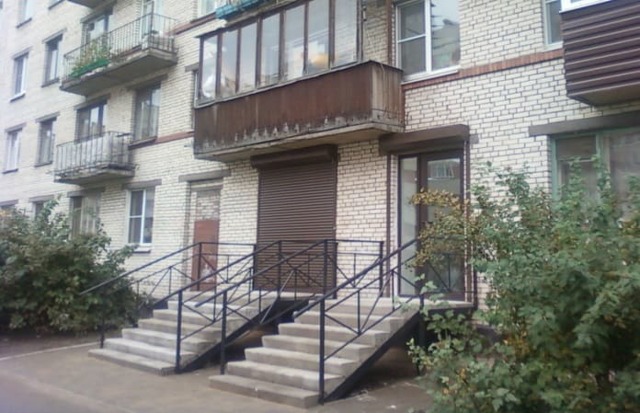
According to Art. 209 of the Civil Code of the Russian Federation, the owner of real estate has the right to dispose of it at his own discretion. This makes it possible to re-register the status of the premises from residential to non-residential and vice versa.
At the same time, the law states that the owner’s actions must not:
- Violate Art. 288 Civil Code of the Russian Federation and Art. 17 Housing Code of the Russian Federation, limiting the rules for the use of premises;
- Harm the environment;
- Violate construction and sanitary standards;
- Endanger the lives of other residents of the house;
- Violate fire safety requirements
A change in the status of the premises will need to be agreed upon with local authorities, indicating their further intentions for its use.
It is possible to receive a refusal in case of violation of current legislation or non-compliance with requirements.
Only legal owners and their official representatives have the right to request a change in the status of residential premises. If the property is simultaneously owned by several persons, each of them must give their consent. In this case, the collection of documents occurs mutually.
Which residential premises cannot be converted to non-residential status?
Changing the status of the premises is possible only subject to compliance with the Civil Code, Housing Code, fire safety rules, and sanitary and hygienic standards. In many ways, obtaining a permit depends on the goal being pursued.
Article 22 of the RF Housing Code provides for a number of restrictions on the transfer of residential premises to non-residential premises:
- Use of real estate for permanent residence;
- encumbrances and other restrictions on the property
- The location of the apartment is on the ground floor, or on other floors, provided that underneath them there are premises removed from the residential form;
- Attempts to remove real estate transferred under a social tenancy agreement from the housing stock;
- Impossibility of equipping a separate entrance to the premises from the street;
- Conducting religious, industrial or missionary activities;
- Inclusion of the house in the composition of cultural values;
- Entering the building into the register of dilapidated and emergency buildings
According to SNiP standards, it is prohibited to equip warehouses in apartment buildings, create industrial workshops, or stores with flammable goods and household chemicals.
If the premises or the future purpose of its use falls under at least one of the restrictions, its conversion to non-residential use will not be possible.
The government plans to amend the current legislation regarding the purposes of converting residential premises into commercial ones. For example, prohibit the creation of hostels and hotels in apartment buildings.
How to change the status of a premises in 2023
It is possible to convert any premises into non-residential premises, be it an apartment in an apartment building or a private cottage. At the same time, it is much easier to do this in a separately constructed building.
The scope of use of houses is more extensive. It is possible that it will be designated as a small workshop, subject to compliance with fire safety rules and environmental requirements.
The procedure for transferring an apartment to non-residential status is quite complicated. The official owner will be able to exercise this right by collecting the necessary list of documentation and refurbishing the property in accordance with sanitary and fire requirements.
Not only the official owners, but also their representatives have the right to change the status of the premises. Subject to availability of a notarized power of attorney.
The transfer of residential premises to non-residential premises occurs in several stages. We invite you to review the step-by-step instructions.
Stage 1. Preparatory activities
At the first stage, the owner should familiarize himself with the terms of the transfer in detail. It may be necessary to re-register some documentation and obtain legal advice from an independent specialist.
Changing the status of the apartment will require preliminary installation of a separate entrance. For this purpose, it is necessary to draw up new project documentation and coordinate it with local authorities, BTI and other organizations.
A separate entrance must be equipped without violating building codes. It is prohibited to install it in load-bearing walls. A mistake can lead to the imposition of an administrative penalty and the need to restore the premises to their original form.
As for private houses, the status of the land on which the property is located plays a big role. If it is not privatized, the owner will need to pre-register ownership. Additionally, it is necessary to change the status of the land plot. The location of a commercial facility in a recreational area is prohibited.
Transferring an apartment to non-residential premises will require obtaining the consent of the owners of the apartment building. The issue is submitted to the general meeting. If the majority of residents vote against changing the status of the property, its transfer will be impossible.
If any difficulties arise, the owner has the right to file a claim in court. At the same time, it does not matter at what stage they received a refusal to transfer the status of the premises.
Stage 2. Drawing up an application and preparing documents
The procedure for transferring residential premises to non-residential premises requires the preparation of a written application and preparation of documents.
The mandatory list includes:
- Passport of the owner of the premises;
- Title documents for real estate, land plot located under a private house;
- Technical plan for converting the premises into non-residential use with a detailed description;
- Floor plan of the apartment building in which the apartment is located;
- Redevelopment project
The above list is enshrined in Art. 23 Housing Code of the Russian Federation. In the absence of at least one document, the owner will receive a legal refusal to change the status of the premises.
Collecting documents will require visiting the local administration, housing inspection, BTI and other organizations. Each of them must provide a separate list of documents, including consent to change the status of the premises received from the owners of the apartment building.
Preliminary collection of documentation will require the provision of title documents for real estate and land (relevant for a private house). The owner will need to provide a certificate of ownership, receipt of inheritance , purchase and sale agreement, gift .
If the apartment or house is still not registered in the cadastral register, you will need to visit Rosreestr for the initial registration and obtain a cadastral number . In the case of a private house, it is additionally necessary to carry out land surveying .
Download a sample application for transfer of residential premises to non-residential premises
Stage 3. Coordination of actions
Documents to change the status of the premises are submitted to the Property Management Department. The decision on transfer is made within 45 days.
If the result is positive, the owner will need to carry out redevelopment in accordance with the new technical plan (if it has not already been carried out). Invite members of the commission who will check the proper condition of the premises and draw up a report.
Then it is sent to Rosreestr for an official change of status. New documents are issued to the owner no later than 15 days from the date of their acceptance.
How much does it cost to convert residential premises to non-residential premises?
The cost of converting residential premises to non-residential premises is determined individually. There are no standard numbers here. We can only say that the procedure will not be cheap.
You will have to spend money on:
- Obtaining documentation and permits;
- Carrying out redevelopment;
- Payment for legal and notary services, if necessary
The period for re-registration of documents will take from 6 to 8 months, according to administrative regulations. Their approval by the BTI, housing inspectorate and other organizations takes on average 1-2 months.
The cost largely depends on the availability of title documentation. In some cases, owners have to spend money on re-registration of ownership.
The possibility of going to court to confirm the legality of ownership of real estate is not excluded. As a rule, such cases relate to houses and plots issued for indefinite use.
Changes in the law on shared construction
Arbitrage practice
Cases of refusal to transfer non-residential premises to a residential building, and vice versa, occur quite often. The owners have no choice but to go to court.
We propose to consider examples from judicial practice:
- A statement of claim was filed with the district court of the Krasnodar Territory with a request to recognize the refusal to transfer the premises from non-residential to residential as illegal. The negative response from local authorities was motivated by a violation of building codes when arranging a separate entrance to the premises. The owner unlawfully dismantled the window unit, turning it into a doorway. The court rejected the claim, recognizing a clear violation of current legislation.
- A lawsuit was filed in the court of Tyumen by the owner of a private house with a request to declare the refusal to transfer the status of the property to commercial as unlawful. When the building was erected, it was located on land intended for housing construction, i.e. was built in accordance with all legal norms. The local administration made changes to the zoning of the settlement, as a result of which the land was classified as a recreational zone. Despite the authorities’ guilt in changing the status of the site, the court sided with them, recognizing the refusal as lawful.
- The owner of a residential apartment received a full package of documents for its transfer to non-residential status, having coordinated the actions with the local administration and the building council. However, during the redevelopment process, building standards were not followed. The load-bearing walls were partially demolished. The commission refused to issue an act, as a result of which the owner filed a claim in court. The judge recognized the commission's actions as justified, issued a decision to impose an administrative penalty on the property owner and a decision on the need to bring the premises to their original condition.
Resolving the issue of changing the status of the premises in court rarely satisfies the owner’s requirements. Often, the refusals received are fully justified.
Despite the negative answer, the owner of the premises has the right to “turn” the situation in his direction. You can always come to an agreement with the owners of an apartment building, obtain missing documents again, correct existing violations of building and fire regulations by submitting documents again.
Prohibition on transferring premises from residential to non-residential
The Russian government regularly reviews the rules for changing the status of premises. Based on its decisions, new bills are periodically introduced. One of them is a complete ban on the transfer of residential apartments to commercial real estate.
The new resolution was approved in the first reading. The second dragged on for several years, so today owners can still exercise their legal right to change the status of the property. If the bill is adopted, this will no longer be possible.
How can residential premises be converted into non-residential premises?
Citizens who own several apartments on the 1st floor prefer to make a profit by renting out free space. However, commercial real estate brings in much more profit than residential real estate. In areas where the demand for it is quite high, it makes sense to transfer it to the non-residential category in order to avoid problems with the authorities and neighbors.
Commercial real estate not only costs more, but also, if rented out, brings a stable and fairly high monthly income. Therefore, the costs of converting premises are often justified. But it should be remembered that after receiving the documentation, utility bills and property taxes will be calculated in relation to commercial property.
The official transfer of residential premises to non-residential premises is the owner’s opportunity to rent it out for office space or other commercial activities without unnecessary delays. But this requires mandatory coordination with the neighbors of the apartment building. Often they are not ready to compromise, which creates conditions when the transfer becomes impossible.
The basic document regulating the norms, conditions and procedure for converting residential premises into non-residential premises is the Housing Code of the Russian Federation dated December 29, 2004 No. 188-FZ Chapter 3. But they also give local authorities the opportunity to establish their own rules for transfer, without violating current legislation.

Conditions
When starting the procedure for collecting documents for transferring an apartment to non-residential real estate, you need to know the conditions that must be met. The main one is belonging to the type of housing that may be subject to transfer. Article 22 of the Housing Code prohibits this action if the apartment:
- does not have the ability to refurbish the entrance and isolate it from the common one, through which residents of an apartment building enter the entrance;
- is in pledge, arrest or leased under an agreement;
- is not located on the ground floor of an apartment building (except for the case when the premises located below are non-residential);
- has citizens registered or living in the square;
- not permitted for religious activities.
It should also be clarified that the entire apartment is subject to transfer. Therefore, it is impossible to convert part of it (a room or several rooms). Other mandatory conditions include:
- availability of free access to engineering communications;
- the apartment building should not be on the list of dilapidated, unsafe or subject to demolition;
- Local authorities will refuse to convert residential space into non-residential space in a house that is designated as an architectural monument.
The conversion documentation must indicate the intended purpose of the premises. Some types may require structural reinforcement, sound insulation, etc. Industrial use in an apartment building is prohibited.
At first glance, the procedure, subject to the above conditions, seems quite simple. But it should be taken into account that permission must be given not only by the local administration, but also by numerous supervisory authorities, with which coordination is required.
In general terms, according to Art. 23, the procedure for transferring residential premises to non-residential premises can be described by the following algorithm:
- Drawing up a project for the redevelopment of premises in a licensed organization and agreeing on it with all licensing authorities. Reconstruction or redevelopment may be necessary if the premises are planned, for example, for a store, as well as the organization of a separate exit. The project must be drawn up by a specialized organization, which then coordinates it with Rospotrebnadzor, Pozhnadzor and the architectural department of the administration.
- Submitting an application to the local government authority along with a package of necessary documentation. This can be done in person or through the MFC.
- Obtaining permission from the administration to transfer to non-residential premises. The response is given 45 days, during which time a decision on approval or refusal is prepared.
- Carrying out redevelopment work and obtaining a commissioning certificate.
- Obtaining a technical plan. The result of the reconstruction of the premises is a new technical plan drawn up by a licensed specialist and certified by his electronic signature.
- Registration of ownership rights to a non-residential property. The decision to transfer the premises from residential to non-residential or the decision of the acceptance committee act (depending on whether redevelopment was required) is sent to Rosreestr by the administration where the documents were submitted by the owner of the premises. The information is entered into the Unified State Register within 15 working days, and the Rosreestr body sends a notification to the applicant within up to 5 working days.
- Obtaining an extract from the Unified State Register of Real Estate.
At each stage, additional documents are required and approvals are obtained. Sometimes the time and money costs are quite large. But, if the owner believes that they will not be wasted, then it makes sense to convert the premises for commercial purposes.
What documents will be needed?
The main documents that will need to be provided to the authorities include:
- an application for the transfer of premises from residential to non-residential, which indicates a request to coordinate the transfer of the premises and the intended purpose for what purposes it will be used; (form and sample)
- the applicant’s identity card or documents of an authorized person (passport and notarized power of attorney);
- documents on ownership of the apartment that is planned to be transferred to non-residential use;
- cadastral passport and apartment plan received from the BTI;
- floor plan of a multi-story building;
- if it is necessary to carry out redevelopment or reconstruction work, then the corresponding project must be attached;
- documents evidencing the holding of a general meeting of owners of apartments and premises of the house, in accordance with the rules (notifications of the date and time of the meeting, a document on registration of participants, minutes of the meeting and decisions, lists of persons who are owners of premises in an apartment building);
- if the apartment is registered in the name of a minor citizen, it is necessary to obtain a decision from the guardianship and trusteeship authorities.
The administration may request a number of documents as part of the interdepartmental exchange of documents, but to speed up the review time, you can submit them yourself.
What to do if your transfer is refused?
It is not always possible to obtain the consent of the authorities to transfer the premises to non-residential use. There may be the following reasons for this:
- the package of documents turned out to be incomplete;
- the declared reconstruction or redevelopment is not agreed with the supervisory authorities or contradicts the requirements for fire safety, sanitary operation of the premises, etc.;
- the consent of all owners of the apartment building premises to transfer the apartment to a non-residential property has not been obtained;
- the conditions within which the transfer is possible have not been met.
In some cases, after receiving a refusal, it is possible to return to collecting the missing documents and submit the application again, attaching them. But often the neighbors become opponents of changing the status of the premises.
Therefore, gaining their consent is the most difficult stage. Any of them can complain to the supervisory authorities that their rights are violated when organizing office space, a store, a salon, etc. in the house.
Then the administration will definitely refuse to convert the residential premises.
Video: Transfer of residential premises of an apartment building into a non-residential building
Transfer of apartment to non-residential premises 2023 2023
To make a transfer from residential to non-residential premises, it is necessary to collect a set of documents specified in clause 2 of Art. 23 of the Housing Code of the Russian Federation (hereinafter referred to as the Code), namely:
- a statement indicating the desire to transfer residential premises to non-residential premises;
- title documents for the apartment (may not be provided if the right is registered in the Unified State Register of Real Estate). Details in the article Unified State Register of Real Estate - EGRN.
- a project for the reconstruction or redevelopment of the premises, if they are required for the subsequent use of the apartment as a non-residential premises. Municipal regulations establish the form and number of copies of the project. For example, administrative regulations, approved. Decree of the administration of the city of Tyumen dated June 14, 2011 No. 41-pk (hereinafter referred to as the Regulations of the city of Tyumen) stipulates that the project is provided in 4 copies: 1 - on electronic media and 3 - on paper;
- registration certificate of the apartment (optional);
- floor plan of the house in which the apartment is located (optional);
- the applicant’s passport, an extract from the Unified State Register of Legal Entities, if the applicant is a legal entity.
Important! If the registration certificate and floor plan of the house are not provided by the applicant, they, like the title documents for the apartment, are requested from the Unified State Register of Real Estate as part of interdepartmental cooperation.
Note! If the transfer of residential premises to non-residential property entails the use of common house property, then the consent of the majority of residents of the house is required. If as a result of reconstruction there is a reduction in the common property, then the consent of all residents is required.
Conditions for transferring an apartment to non-residential premises – 2023
Important! You can only transfer the entire premises; transferring parts is not allowed.
Before submitting documents, you must deregister all people registered in this premises. Details of deregistration can be found by reading our article Deregistration at the place of residence.
Note! Only apartments located on the 1st floor are allowed to be converted into non-residential ones. Those located above (on the 2nd, 3rd and subsequent floors) are only possible if only non-residential premises are located below. If there is a store on the 1st floor of the building, then the apartments located above it on the 2nd floor can be converted into non-residential premises.
It is not allowed to convert apartments into offices that are encumbered by the rights of third parties, so it will not be possible to transfer an apartment purchased with a mortgage and pledged to the bank. For information on changes to mortgages, read the article Changes to mortgages in 2023.
It is prohibited to change the status of an apartment to non-residential (clauses 3.1, 3.2 of Article 22 of the Code):
- in a rented house for social use;
- for the purpose of carrying out religious activities.
How is the translation carried out?
The transfer of residential premises to non-residential premises is carried out in the following order:
- the applicant submits an application and the necessary documents;
- the municipality decides to transfer or refuse to transfer the premises;
- the applicant carries out the reconstruction of the premises, if this is indicated in the decision to transfer the apartment to the residential property;
- the acceptance committee accepts the completed work, which is confirmed in a special act;
- the applicant submits an application to change the purpose of the premises to the Unified State Register of Real Estate.
The decision to transfer an apartment to an office or retail space (or to refuse the transfer) is made within 45 days; the municipality has 3 more days to communicate its decision to the applicant (clause 4 of article 23 of the Code).
If the decision does not contain a requirement for the reconstruction of the premises, then it is confirmation that the transfer has been completed. Based on it, changes are made to the Unified State Register.
In the case where the decision contains a requirement to carry out redevelopment, the basis for entering data into the Unified State Register will be the act of the acceptance committee. If the commission refuses to accept construction work, the applicant must eliminate the comments and re-apply for acceptance.
When can a transfer be refused?
Above we told you how to convert residential premises into non-residential premises in an apartment building. Now let's look at the cases in which translation may be refused. The list of such cases is contained in Art. 24 of the Code and is closed. So, they can refuse when:
- the applicant did not provide the required documents;
- the applicant provided documents to the wrong authority;
- the applicant violated the conditions for transferring the premises, which we described earlier;
- the project for converting an apartment into non-residential premises does not comply with legal requirements.
Note! They can also refuse if the applicant has not provided documents that are provided at will, and the responsible authority has responded that the necessary data is missing.
The body conducting the transfer must notify the applicant of the receipt of such a response and invite him to provide the necessary information.
A refusal to transfer an apartment to non-residential premises is given if the necessary data was not received from the applicant within 15 working days from the date of sending the notification.
The decision to refuse must include a reference to one of the above grounds.
Important! A refusal to transfer an apartment to a residential property can be appealed through the court.
So, changing the status of a premises to non-residential is carried out by a local government body based on an application from the owner of the apartment. If the use of an apartment as a residential property requires reconstruction, then a project for such reconstruction is provided along with the application.
In the event that the reconstruction will reduce the size of the common home property, it is required to submit a document indicating the consent of all co-owners. A refusal to transfer can be given only if there are grounds contained in Art. 24 Code.
An unlawful refusal can be appealed in court.
The procedure for converting non-residential premises into residential premises in 2023
Any real estate is divided into residential and non-residential. The main difference is in purpose . Residential premises are intended for people to live in, while non-residential premises are intended for conducting commercial, industrial, warehouse and other types of activities.
The transfer of residential premises to non-residential premises is regulated by special laws and regulations and is controlled by authorized bodies. This is necessary in order not only to record the status of real estate objects and keep their correct records, but to comply with sanitary standards and urban planning requirements.
All cases are very individual and depend on many factors. Basic information does not guarantee a solution to your specific problems. That's why FREE expert consultants work for you around the clock! Submit your question using the form (below) and one of our lawyers will call you back to provide a free consultation.
What are residential and non-residential premises in 2023
Article 15 of the Housing Code of the Russian Federation names the objects of housing rights. These include:
- residential buildings and their parts;
- apartments and their parts;
- rooms.
The rest relates to non-residential premises - that is, warehouses, offices, workshops, shops, administrative, educational, sports, cultural institutions and other real estate for economic and auxiliary purposes not suitable for permanent residence.
The criterion for determining suitability for habitation is sanitary and technical standards, enshrined mainly in SanPiN. Compliance with these very standards is checked by the commission when the developer delivers a residential building.
Residential and non-residential premises can be located within the same building
A classic example is shops and offices on the ground floor of a multi-storey residential building. By law, non-residential premises can be located on the first, second and basement floors of residential buildings; there is no such restriction for detached non-residential buildings. So it will not be possible to convert an apartment located, for example, on the tenth floor, into non-residential premises by converting it into an office.
This is interesting: Law on providing housing for orphans 2023
The differences between the two types of premises include the following:
- in residential premises you can apply for registration (permanent and temporary), in non-residential premises - not;
- residential premises can be rented out or rented;
- non-residential premises can only be rented out and an easement agreement can be concluded;
- A different taxation regime has been introduced for each type of premises.
Still looking for an answer? It's easier to ask a lawyer! Write your question using the form (below), and our lawyer will call you back within 5 minutes with a free consultation.
Regulatory acts
The procedure for transferring non-residential premises to residential premises is regulated in detail in the following regulations:
- Housing Code, namely, Chapter 3;
- Town Planning Code, which describes the requirements for residential and non-residential premises and regulates the rules for the location of non-residential premises within the city;
- Federal Law “On State Registration of Rights to Real Estate”, which prescribes the procedure for registering rights to non-residential premises;
- Resolution “On approval of the Regulations on recognizing premises as residential premises”;
- Construction norms SNiP 31-01-2003, regulating the rules for the placement of non-residential premises in apartment buildings;







